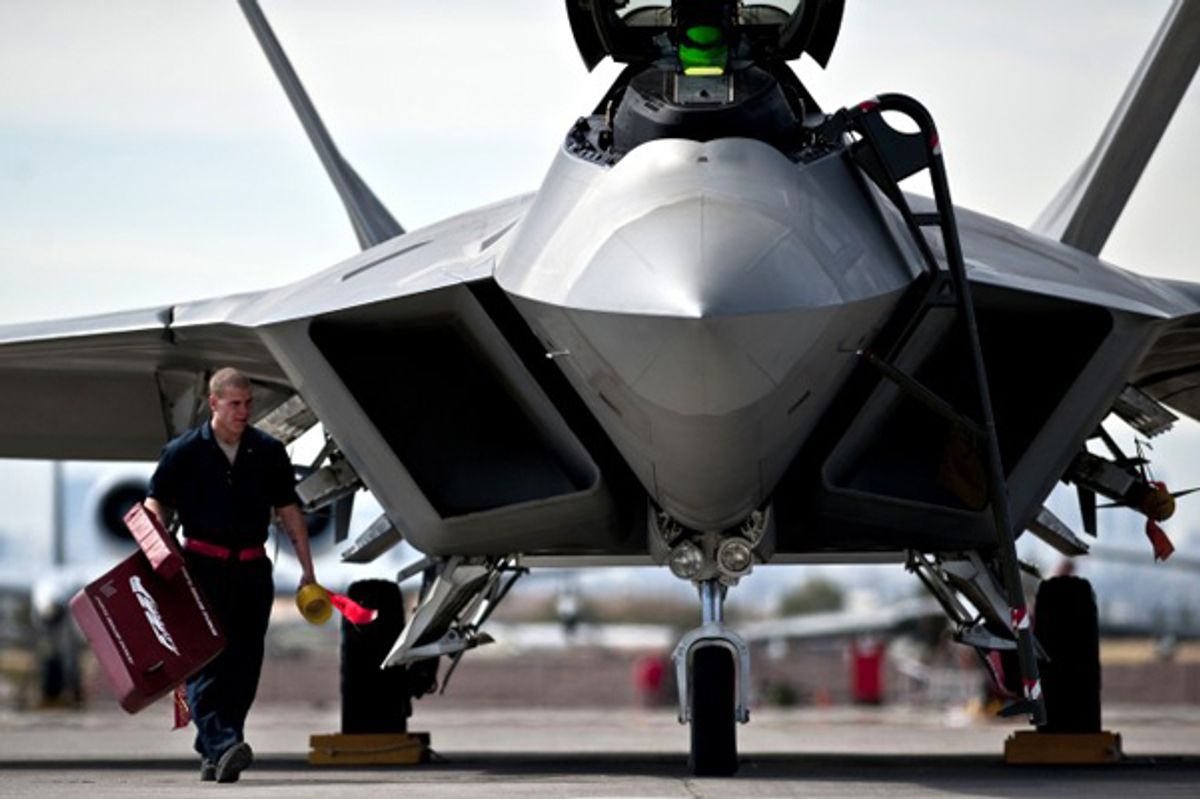Citing emergency powers, President Donald Trump signed an executive order late in the day on Friday that would allow retired military pilots to be recalled to active duty.
But the broad wording of the executive order seemed to imply that the executive branch would have the power to call up retired military officers and force them back into service for any reason, as the “emergency” Trump used to justify the executive order was extremely vague: “the continuing and immediate threat of further attacks on the United States.”
This executive order is officially an amendment to Executive Order 13223, signed by George W. Bush in September 2001 in the wake of the 9/11 terrorist attacks. Trump’s executive order claimed to be “in furtherance of the objectives of Proclamation 7463… which declared a national emergency by reason of the terrorist attacks of September 11, 2001.”
Stay with me, because this gets confusing. So Trump basically wrote an amendment to Bush’s 2001 executive order. All Bush’s executive order really said, though, was that an emergency existed and the president had authorization to use a variety of statutes in the federal code. It then listed those statutes, of which there are many; let’s just say they mostly involve the executive abilities to send the military around the world and limit troops’ ability to retire.
In any case, Trump’s executive order specifically invoked two of the sections of the United States Code. Here’s what Trump's order says specifically:
Section 1 of Executive Order 13223 is amended by adding at the end: "The authorities available for use during a national emergency under sections 688 and 690 of title 10, United States Code, are also invoked and made available, according to their terms, to the Secretary concerned, subject in the case of the Secretaries of the Army, Navy, and Air Force, to the direction of the Secretary of Defense."
So he’s referencing Bush's executive order, and then referencing sections 688 and 690 of the United States Code. If you go to those codes, you’ll see that title 10, section 688 of the United States Code says
Under regulations prescribed by the Secretary of Defense… a [retired member of the Army, Navy, Air Force, Marine Corps, or Reserve] may be ordered to active duty by the Secretary of the military department concerned at any time. … The Secretary concerned may, to the extent consistent with other provisions of law, assign a member ordered to active duty under this section to such duties as the Secretary considers necessary in the interests of national defense.
Section 688 (d) then states that certain retired officers — specifically, those who retired on “selective early retirement basis” — may not be ordered to active duty by the “Secretary of the military department.” Furthermore, in section (e), the code notes that members “ordered to active duty” under this code will be limited to 12 months of active duty.
But then, the final section of 688 states that the aforementioned two exclusions are “waived” in “periods of war or active emergency” — which is exactly what Trump has just affirmed exists right now.
This means that this executive order is a bit of a “micro-draft”: It allows the military to recall retired officers to active duty. A USA Today article about this executive order (or rather, this amendment to an existing executive order) noted that the Air Force has been particularly crucial in military operations against ISIS in Syria and Iraq. Moreover, the Air Force has had a pilot shortage brewing for over a decade. In September 2017, military leaders interviewed by United Press International (UPI) that the military was in a crisis. “We're 1,500 pilots short, and if we don't find a way to turn this around, our ability to defend the nation is compromised,” Gen. David L. Goldfein, Air Force Chief of Staff, told UPI. Likewise, a report by the RAND corporation, a think tank, stated that the shortage was partially because “employment opportunities are excellent in the private sector.”
There has been little media coverage of the executive order as of Friday evening, beyond the aforementioned USA Today piece. Around the internet, some social media users were alarmed at the nonspecific nature of the term “national emergency,” which seemed to hint at executive overreach. In the /r/Military subreddit, a nonpartisan US military forum with many veterans and enlisted officers, debate raged over the ramifications of the order. “Can someone convince me this isn’t a prelude to war in Korea,” wrote one user with the handle "NotARandomNumber." Others were less conspiratorial. “My guess is that this is the most deficit neutral way to maintain Air Force staffing in the face of upcoming tax cuts. At least that's what I hope,” wrote user "TheBigRedSD4."

Shares